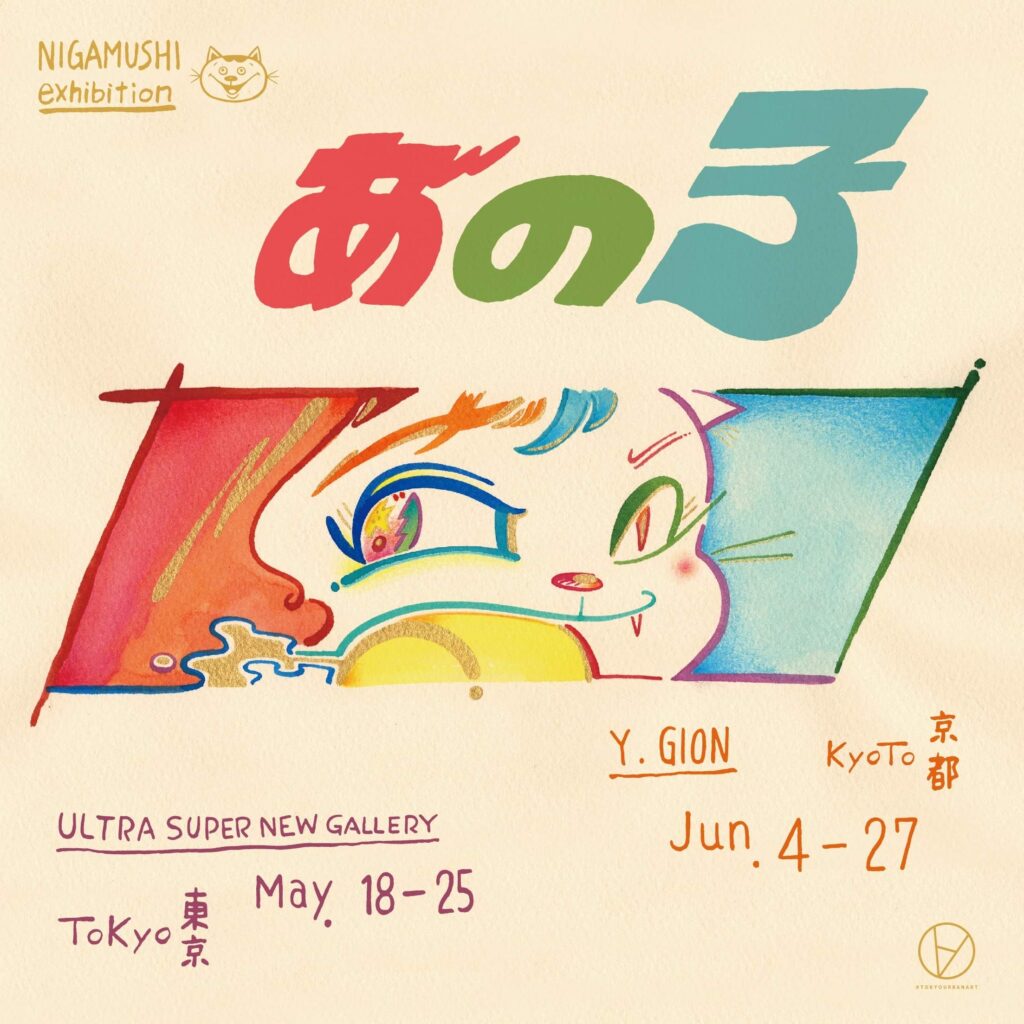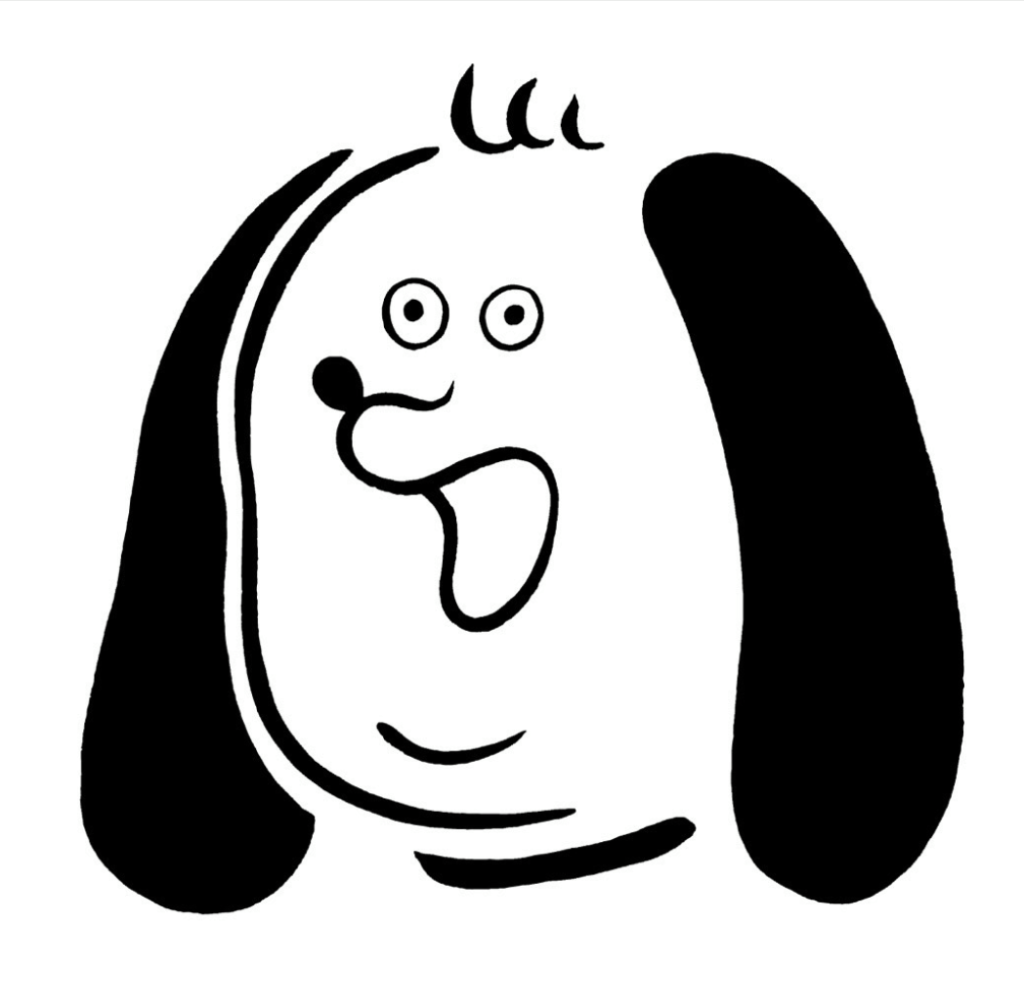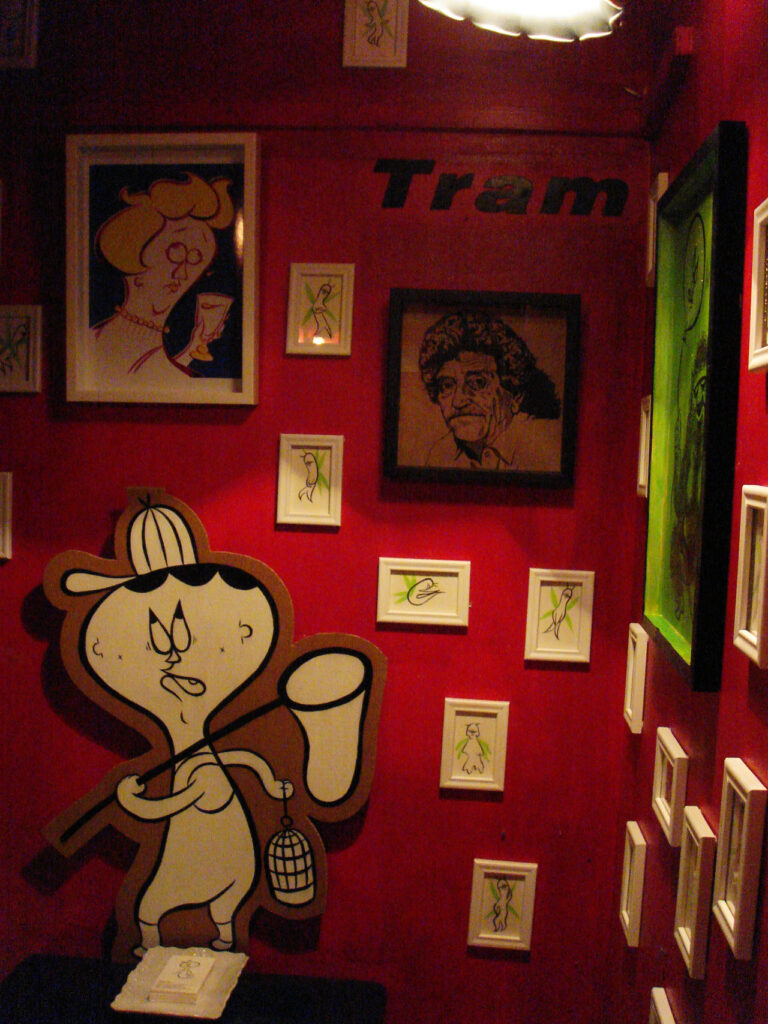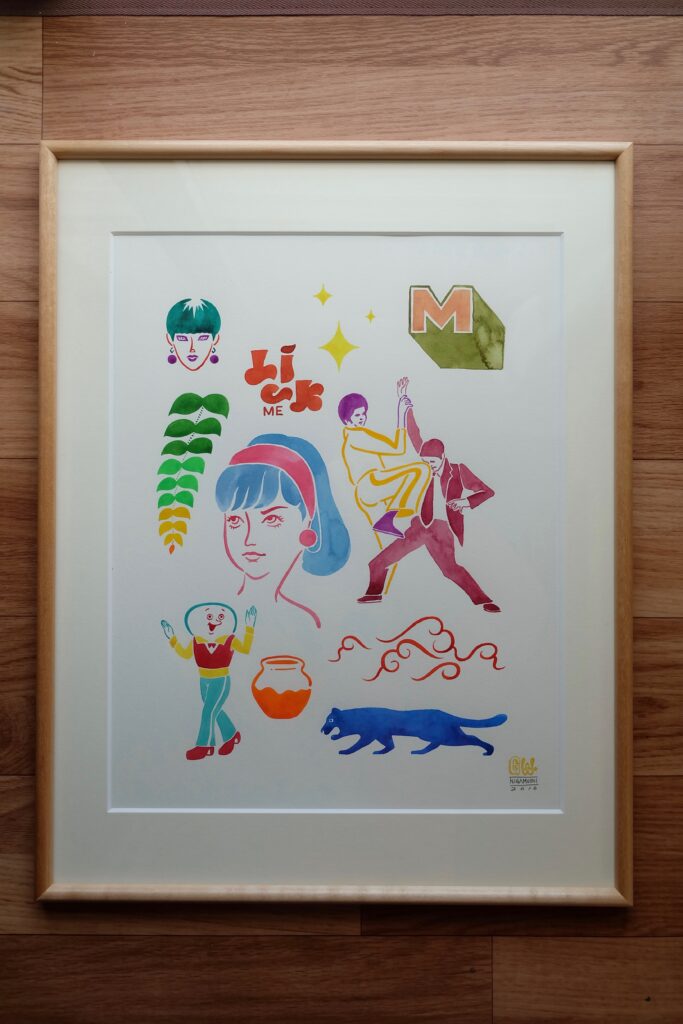Artist Interview No.2 -Nigamushi- vol.1
日本の現代アートを世界に発信するべく、THAT IS GOODが「いいね!」と思ったアーティストを紹介させて頂く企画の第二弾!
今回紹介させていただくのは、6月4日〜6月27日まで、京都の東山区にあるy gionというギャラリーにて、個展「あの子」を開催中の苦虫ツヨシさんです。
This is the second issue of our project to introduce artists recommended by THAT IS GOOD in order to share Japanese contemporary art to the world!
This time, we would like to introduce you to Nigamushi, who is currently holding his solo exhibition “Anoko” at a gallery called ”y gion” in Higashiyama-ku, Kyoto from June 4 to June 27 2021.
2009年から”苦虫ツヨシ”として活動を開始し、12年目になるそうです。
私の主観になりますが、ゆるくてポップな雰囲気もある一方で、どこかオマージュ感のあるスタイリッシュでモダンな、相反した作風を併せ持つアーティストです。
He started his career as ” Nigamushi” in 2009, and it has been 12 years since then.
In my opinion, he is an artist with a contradictory style: loose and poppy, but also stylish and modern, with a sense of homage.


苦虫ツヨシ / Nigamushi
絵描き
国内や海外で個展やイベントなどを行いながら、キャラクターデザイン、ロゴや内装、パッケージデザイン、オリジナルグッズの制作など、多種多様にビジュアルディレクションをして活動虫。
Painter, Art Director Having solo exhibitions or curating his own events not only in Japan but overseas,He is working in Visual Arts in multiple fields such as Character Design, Logo Design,Package Design, and creating his own original goods.
—まずは苦虫ツヨシさんのバックボーンについて教えてください!
—子供の頃から絵を描くのが好きで、もう生活の一部になっていましたね。
自分を形成している要素は、アニメ、漫画ですね。漫画はやっぱりジャンプ。世代的にドラゴンボールですよね。
あとは姉が割とオタクだったので*アニメージュも読んでいました。天空戦記シュラト、サイバーフォーミュラとかスレイヤーズとか、完全ハマってってわけじゃないけど(笑)
そういう意味では今回の個展では、自分の趣味が無意識に出たなあって思います(笑)
*アニメージュ:1978年5月26日に創刊した日本初の本格的商業アニメ雑誌。『風の谷のナウシカ 』 のアニメーション映画化でスタジオジブリ設立のきっかけとなった。
ーFirst, tell us about your backbone!
I’ve loved drawing since I was a child, and it’s already become a part of my life.
The elements that have shaped me are anime and manga. As for manga, I’d have to say Jump. For my generation, it’s Dragon Ball.
Also, my sister was a bit of an otaku, so I used to read Animage. I read things like “Legend of Heavenly Sphere Shurato”, “Future GPX Cyber Formula”, and “Slayers”. It’s not that I’m completely into it, but… lol
In that sense, I think my hobbies came out unconsciously in this exhibition lol
ー他の作品をみると想像もつかないような気もしますが、確かに「あの子」ではそういうバックボーンを感じさせるところがありますね。一方でヒップホップからも影響を受けていたのですよね?
はい。10代でヒップホップっていうカルチャーをくらってしまって。
グラフティなどもその一つで、自分はそれまで漫画とかを描いていたのですが、雑誌をみて「ええ!!スプレーでこんなの描いているやついるの?」と衝撃を受けたんです。
それがベースです。
ーIt seems unimaginable when I look at your other works, but there is certainly a sense of that kind of backbone in ” Anoko”. On the other hand, you were also influenced by hip-hop, weren’t you?
Yes, I fell in love with the hip-hop culture in my teens.
Graffiti was one of them. I used to draw cartoons, but when I saw the magazine, I was like, “What! Who draws this stuff with spray paint? I was shocked.
That was the basis of my work.
ーその後、高校を卒業した後に東京に出て、グラフィック方面ではなく、意外にも工芸デザインを学びに専門学校に入ったとお聞きしました。
当時は絵を描くことは趣味と考えていて、デザイナーになろうとニッポンデザイン専門学校の工業工芸デザイン科に入ったんです。
学校で専攻とかってあるじゃないですか?でも当時は全部やりたいという気持ちがあって比較的ここなら何でもやらせてもらえると思ったんですよね。
もともと立体もやりたいっていう気持ちがあったので、工業デザイン、工芸デザイン、陶芸、金工、ガラス、クラフトデザイン、シルバーアクセサリー、家具とかも自分でやっていました。
ーThen, after graduating from high school, you moved to Tokyo and surprisingly entered a technical school to study craft design instead of graphic design.
At the time, I thought of drawing as a hobby, so I entered the Industrial Craft Design Department at Nippon Design College to become a designer.
At school, there are majors, aren’t there? But at the time, I wanted to do everything, and I thought that I could do anything here, relatively speaking.
I had always wanted to do three-dimensional work, so I did industrial design, craft design, ceramics, metalwork, glass, craft design, silver accessories, and furniture by myself.
ー卒業後、施工管理会社にアルバイトで入り働いていた苦虫さん。自分が考えていたようなインテリア業界とは全然違う世界に戸惑いながらも、ある時代の変化によって仕事の方向性をシフトさせていくことになります。
MacでIllustratorが使える様になって、その影響でグラフィックデザインが個人でもできる時代になっていきましたよね。その流れの中で自分もデザインや印刷関係の仕事をしていました。
ですが、グラフィックデザインに自分が熱意を持てないことに気がついて、そこで、今まで好きで描いてきた絵だったら、ずっと続けていけると気づいて、28歳の頃から個展とかをやる様になりました。
ーAfter graduation, Mr. Nigamushi entered a construction management company as a part-time worker. He was confused by the world, which was completely different from the interior design industry he had thought of, but a change in the times led him to shift the direction of his work.
With the advent of Illustrator on the Mac, graphic design became something that even individuals could do. As a result, I started working in the design and printing industry.
However, I realized that I was not enthusiastic about graphic design, and I realized that if I could continue to draw pictures that I had always loved, I would be able to do so for a long time, so I started having solo exhibitions when I was 28.
ーそこから今に至るという形なのですね。だいぶ大きくシフトした形ですね…!
施工管理会社の経験は今の作品作りにリンクしていたりはするのですか?
内装屋さんで働いていた時に、内装、空間、印刷物などいろいろ仕事として請け負えたことは経験として活きていますね。それで、たまに好きなように個展をやって…。自分の持っているスキルを全部詰め込んでやれるのが個人事業主ですから(笑)
まあ絵描きだからこれをやらなければいけない、又はこういうことはやってはいけないという様な制約は無いですからね。
ーSo that’s how you got to where you are today. That’s quite a big shift…!
Does your experience at the construction management company have any link to your current artwork?
When I was working for an interior decorator, I was able to take on various jobs such as interior design, space design, and printing… Then, sometimes I do solo exhibitions as I wish…. As a sole proprietor, I can put all my skills to work lol
Well, there are no restrictions on what I have to do as a painter or what I can’t do as a painter.
ーなるほど。自分の経験全てがアイデアや仕事につながっているのですね。
はい。ちなみに最初に影響を受けたアーティストはフィリップ・スタルクなんですけど、彼の作品集を見た時に、有名なアサヒビール本社ビルとかは知っていましたが、建築家なのにプロダクトも手掛けていたりして「あっ、建築家って家を設計するだけじゃなくても良いんだ!?」とびっくりしたのを覚えています。
同様に、マルチにやっている人にすごく影響を受けてきました。映画監督でも色んなネタ要素を持っている人が好きで、ロバート・ロドリゲスやクエンティン・タランティーノとかに多様性を感じます。
他にも影響を受けたところですと、大竹伸朗さんとか…。あの物量を一人で手掛けるとかすごいと思いますね。また、ピカソとか岡本太郎、横尾忠則とかも、自由にそのまま素直にやっているな!と思って、影響されている面はありますね。
それなので自分も、はっきりコレという理由はないんだけれど、描きたいものを描いています。
ーOkay. So all of your experiences have led to your ideas and work.
Yes. By the way, the first artist who influenced me was Philippe Starck, and when I saw his collection of works, I knew about the famous Asahi Breweries headquarters building, but I was surprised to see that he was also involved in product design, even though he was an architect. I remember how surprised I was.
Similarly, I have been very much influenced by people who are multi-talented. I like filmmakers who have a variety of story elements, and I find diversity in people like Robert Rodriguez and Quentin Tarantino.
Other people who have influenced me include Shinro Ohtake. It is amazing that he is able to handle such a large amount of work by himself. Also, Picasso, Taro Okamoto, Tadanori Yokoo… they all do things freely and honestly! I was influenced by them in some ways.
That’s why I draw what I want to draw, although I don’t have a clear reason for doing so.
ー色々とインプットして、独自の世界観を吐き出す人たちという意味では、皆さん一貫性がありますね。でも変化も恐れないし、変化してもその人のカラーがちゃんと出ているという魅力もお持ちです…。苦虫さんの作品の魅力にも同様のものを感じます。ちなみに普段の創作のインスピレーションはどこから来るのでしょうか?
なんでもそうだと思いますけど、流れとかストーリーですね。僕がいきなり草間彌生さんみたいな絵を描くことはないですよね。結局は自分の積み重ねです。
どんどん変化していっちゃう。画材もどんどん違うのを使っちゃうし。その時代、その時代で使っている紙、画材などによっても変化している感じです。
自分は色々なタッチを書き分けられる方なので、例えば仕事で描いた絵で、普段の自分は描こうと思わないタッチなんですけど、そこで「こんな絵も描けるんだ」みたいな気づきが起きて、それを作品に落とし込む…ということは良くありますね。


さまざまなテイストで描かれている苦虫さんの作品たち
Painted in a variety of styles.
ーIn the sense that they are people who input a lot of things and come up with their own unique worldview, everyone is consistent. But they are also not afraid of change, and even when they change, their own colors come out. I feel the same way about the appeal of Nigamushi’s work. By the way, where does he usually get your inspiration for your work?
I think it’s like anything else, it’s all about flow and story. I don’t suddenly start drawing pictures like Yayoi Kusama. In the end, it’s all about accumulation.
I keep on changing. I use different materials for painting. I feel that my work changes depending on the paper and materials that I am using at the time.
I’m able to draw with a variety of touches, so for example, when I draw a picture for work, it’s a touch that I normally wouldn’t try to draw, but then I realize that I can draw like this, and I often incorporate that into my work.
ーちなみに「こんな絵も描けるんだ」と仰っていましたが、具体的なエピソードなど、あったりするのでしょうか?
TRAFFICというシリーズは、元々は仕事で受けた中学校の英語教材のイラストで、先生が生徒にプリントを渡している…みたいな構図のイラストから生まれたんですよ。
元のイラストは真面目なのですが、その同じタッチに少しフザけた要素を入れてみよう!みたいな感じですね。そういうところから生まれることはありますね。
逆に仕事の中に、新しくできたタッチをブッ混むみたいな時もあります。(笑)
ーBy the way, you said “I can draw pictures like this,” but do you have any specific episodes?
The TRAFFIC series was originally born out of an illustration for English teaching materials at a junior high school I was working for, where the composition was something like a teacher handing out a print to a student….
The original illustration was very sober, but I decided to add a bit of humor to the same touch! That kind of thing. That’s how things sometimes come about.
On the other hand, there are opportunities to incorporate new touches into the work lol

ー僕の個人的な印象ですが、全体の作風を通じて、顔をモチーフに描かれていることが多いなという印象と、モダン的でありながら懐かしさやオマージュ性も感じました。
基本的に昔からアイコン的なものが好きなのかもしれません。デザイン、ピクトグラム、昔の民族の仮面、日本の仮面とかも好きだし…、アイコニックなものに、なにか惹かれますね。自分の絵に顔のアップが多いのはそれですね。体をつけちゃうと顔の良さがうすれちゃうなって思うこともあります。
あとは、やっぱりヒップホップが好きなので、どうしても「元ネタがあって…」というサンプリング的要素に惹かれます。TRAFFICシリーズでは、敢えて元ネタからテーマを決めて描いていこうと考えて制作していますね。
ーMy personal impression is that the overall style of the paintings often uses faces as motifs, and I felt that they were modern, but also nostalgic and homage.
Basically, I guess I have always liked iconic things. I like designs, pictograms, old folk masks, Japanese masks… I am attracted to iconic things. That’s why I often draw close-ups of faces in my pictures. Sometimes I feel that if I put on a body, the beauty of the face is gone.
In addition, I like hip-hop, so I’m drawn to the sampling element of “I have an original story…”. In the TRAFFIC series, I purposely decided on a theme based on the original source material.
ー確かに、そう言われてピンと来ましたが、作品を見ていて面白いなと思ったのが、ゆるいキャラクターとスタイリッシュな人物という様に、本来同居しないものを組み合わせるサンプリング的技法を感じさせる要素が結構あるなと感じていました。


一つのイラストにさまざまなキャラクターが覗かせるのが作品の魅力の一つです。
One of the charms of the work is that various characters can be seen in a single illustration.
血液型がAB型なんで、二律背反みたいな?関係ないかもしれないけど(笑)
実は中学生の時に料理人になりたい時期があったのですが、テレビ番組の『料理の鉄人』を観ていると和洋中に分かれているのが気になるんです。「なぜ和洋中を分けるんだって?」
今でこそ創作料理とか普通だけど、でも当時はそれが当たり前でした。
大抵みんなどちらかに偏るんだけど、僕の場合は両方やりたいんですよね。
だから北斎とかいいですよね。春画やら漫画やら様々なものに挑戦して、死ぬ間際も「あと10年あったら、極められたのに」…みたいな。
北斎の様に悩みながら新しいテイストを取り入れ続けて描き続けたら、一生やって行けそうだな!って思いますね。
ーIndeed, that’s what he said, and it hit me. What I found interesting was that there were many elements that reminded me of the sampling technique of combining things that should not live together, such as loose characters and stylish people.
My blood type is AB, so it’s like an ambivlance. I don’t know if that has anything to do with it lol
Actually, there was a time when I wanted to be a chef when I was in junior high school, but when I watched the TV show “Iron Chef,” I wondered, “Why do they divide cuisine into Japanese, Western and Chinese genres?” Nowadays, creative cooking is common, but back then, it was normal to be separated.
Most people are inclined to one or the other, but in my case, I want to do both.
That’s why I like Hokusai. He tried his hand at Shunga, manga, and many other things, and when he was dying, he said, “If I had ten more years, I could have mastered it.
If I continue to paint like Hokusai, worrying and introducing new tastes, I think I can do it for the rest of my life!
…ということで今回は、アーティストとしての苦虫ツヨシさんの生い立ちを中心にまとめさせていただきました。
Above is the summary of this article, focusing on the background of Tsuyushi Nigamishi as an artist.
フィリップ・スタルクから、ロバート・ロドリゲス、そして北斎まで様々なアーティストの名前が出てきました。彼らは媒体や作風を変え、変化をし続けたアーティストである一方で「●●らしい作風だなぁ」と思わせる軸もあるのが特徴だと思います。
僕が感じたのは苦虫さんの作風も間違いなく同じで、作品ごとにテイストは違うのに「苦虫さんだ!」って思わせる軸があることに、先ほど挙げた先人の系譜にいる人なんだなと印象を受けました!
色彩感覚だったり、線の質感だったり、何より作品がまとうブレない空気感は”おいでよ!苦虫ワールド!”的な魅力が満載なわけです。
The names of various artists have come up, from Philippe Starck to Robert Rodriguez to Hokusai. They are artists who have continued to change their mediums and styles, but at the same time, I think it’s characteristic that there are parts that make you think, “This is a style that is typical of ●●.
What I felt was that Mr. Nigamushi’s style is definitely the same, and even though each work has a different taste, there are parts that make you think, “That’s Mr. Nigamushi!” And I got the impression that he is a member of the lineage of his predecessors that I mentioned earlier!
The sense of color, the texture of the lines, and above all, the unshakeable atmosphere of the pieces give the impression of “Come on! Come to the Nigamushi World!”
次回は、その中でも新境地であり、現在開催されている個展のタイトルでもある「あの子」の話や、作品の制作過程などについても聞いてみたいと思います。お楽しみに!
In the next article, I would like to talk about “Anoko,” which is a new frontier among his works and also the title of his current solo exhibition, as well as the process of creating his works. Look forward to it!
文:THAT IS GOOD編集部 古賀
TEXT : THAT IS GOOD editorial department, Koga